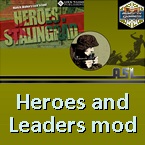asl3d
Posts: 6531
Joined: 2/6/2017
Status: offline

|
British Bren Mark 1 LMG
The Bren gun, usually called simply the Bren, are a series of light machine guns (LMG) made by Britain in the 1930s and used in various roles until 1992. While best known for its role as the British and Commonwealth forces' primary infantry LMG in World War II, it was also used in the Korean War and saw service throughout the latter half of the 20th century, including the 1982 Falklands War.
The Bren was a licensed version of the Czechoslovak ZGB 33 light machine gun which, in turn, was a modified version of the ZB vz. 26, which British Army officials had tested during a firearms service competition in the 1930s. The later Bren featured a distinctive top-mounted curved box magazine, conical flash hider, and quick change barrel. The name Bren was derived from Brno, the Czechoslovak city in Moravia, where the Zb vz. 26 was designed (in the Zbrojovka Brno Factory) and Enfield, site of the British Royal Small Arms Factory. The designer was Václav Holek, a gun inventor and design engineer.
Although was designed to hold 30 rounds of .303” and care had to be taken during loading to ensure that the cartridge case rim was in front of the previous rim, it was found to be far more reliable if only 28 rounds were loaded into the magazine. The gun had a cyclic rate of fire of 500 rounds per minute and 25 magazines were issued per gun. A spare barrel was carried and this could he changed in 2 to 3 seconds but it was not uncommon to see the barrel glow with heat. The method used to try to cool the replaced barrel was often by unconventional methods, but the rapid change barrel using the carrying handle was a godsend to prolonged fire.
Generally, the Bren was fired from the prone position using the attached bipod. On occasion, a Bren gunner would use his weapon on the move supported by a sling, much like an automatic rifle, and from standing or kneeling positions. Using the sling, Australian soldiers regularly fired the Bren from the hip, for instance in the marching fire tactic, a form of suppressive fire moving forward in assault.
It was "by general consent the finest light machine gun in the world of its period, and the most useful weapon provided to the French "maquis" ... accurate up to 1,000 meters, and it could withstand immense maltreatment and unskilled use. "Resistants" were constantly pleading for maximum drops of Brens".
Since Bren guns had been made the principle machine gun of the front line infantry, it was not surprising that the first British soldier to land in France during the 1944 Normandy invasion was a Bren gunner. At 00:02 hours on 6 Jun 1944, Private William Gray of D Company of 2nd Battalion of the airborne infantry regiment Oxfordshire and Buckinghamshire Light Infantry arrived by glider to ensure those who landed after him would have the benefit of cover fire from his Bren gun should there be such need immediately upon landing.

 Attachment (1) Attachment (1)
_____________________________
Semper fidelis
|
 Printable Version
Printable Version





































 New Messages
New Messages No New Messages
No New Messages Hot Topic w/ New Messages
Hot Topic w/ New Messages Hot Topic w/o New Messages
Hot Topic w/o New Messages Locked w/ New Messages
Locked w/ New Messages Locked w/o New Messages
Locked w/o New Messages Post New Thread
Post New Thread